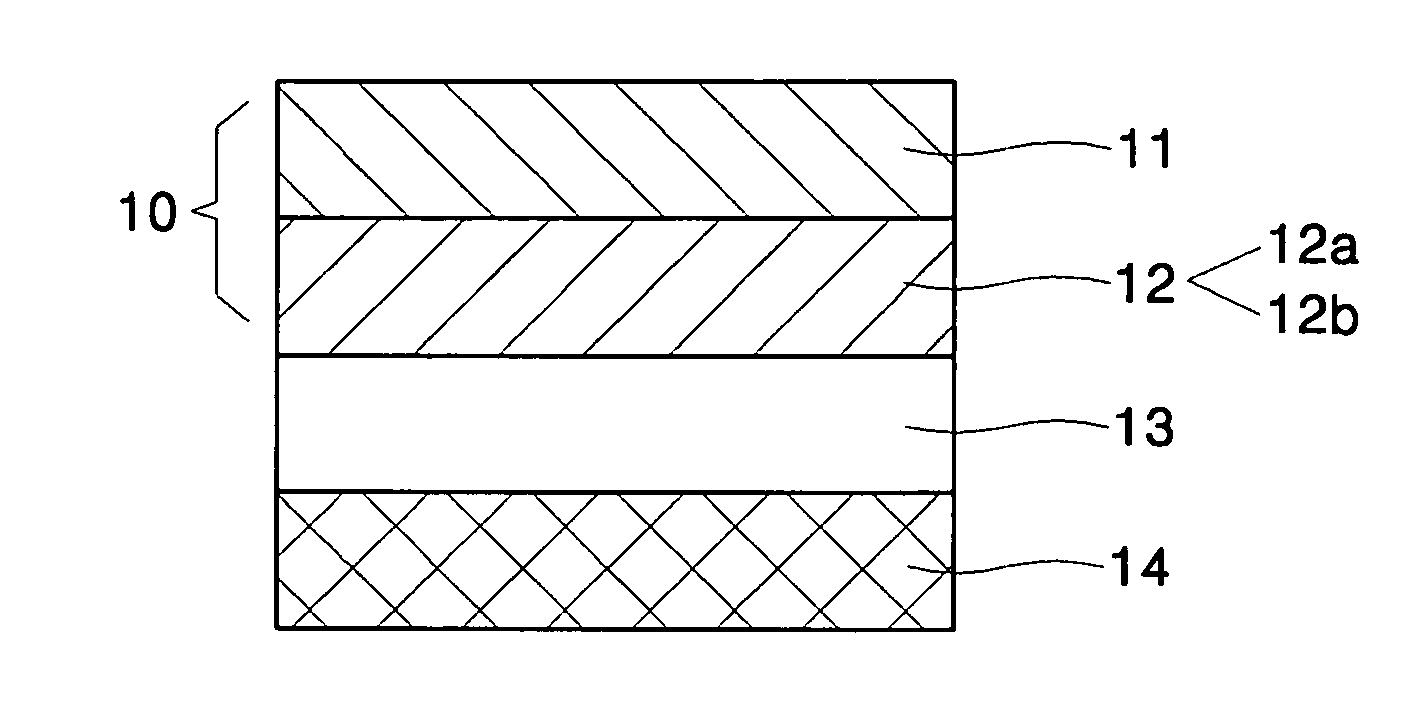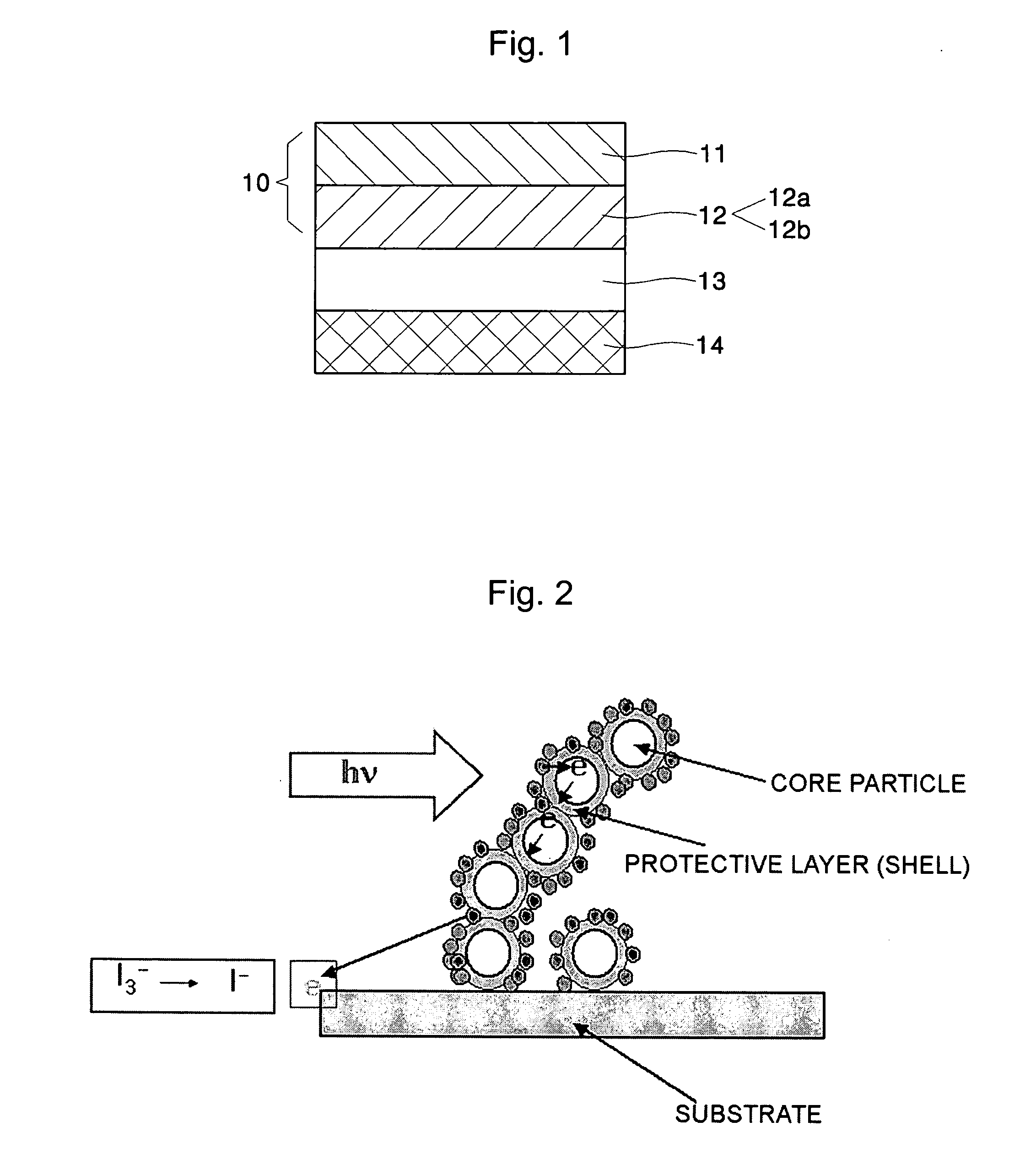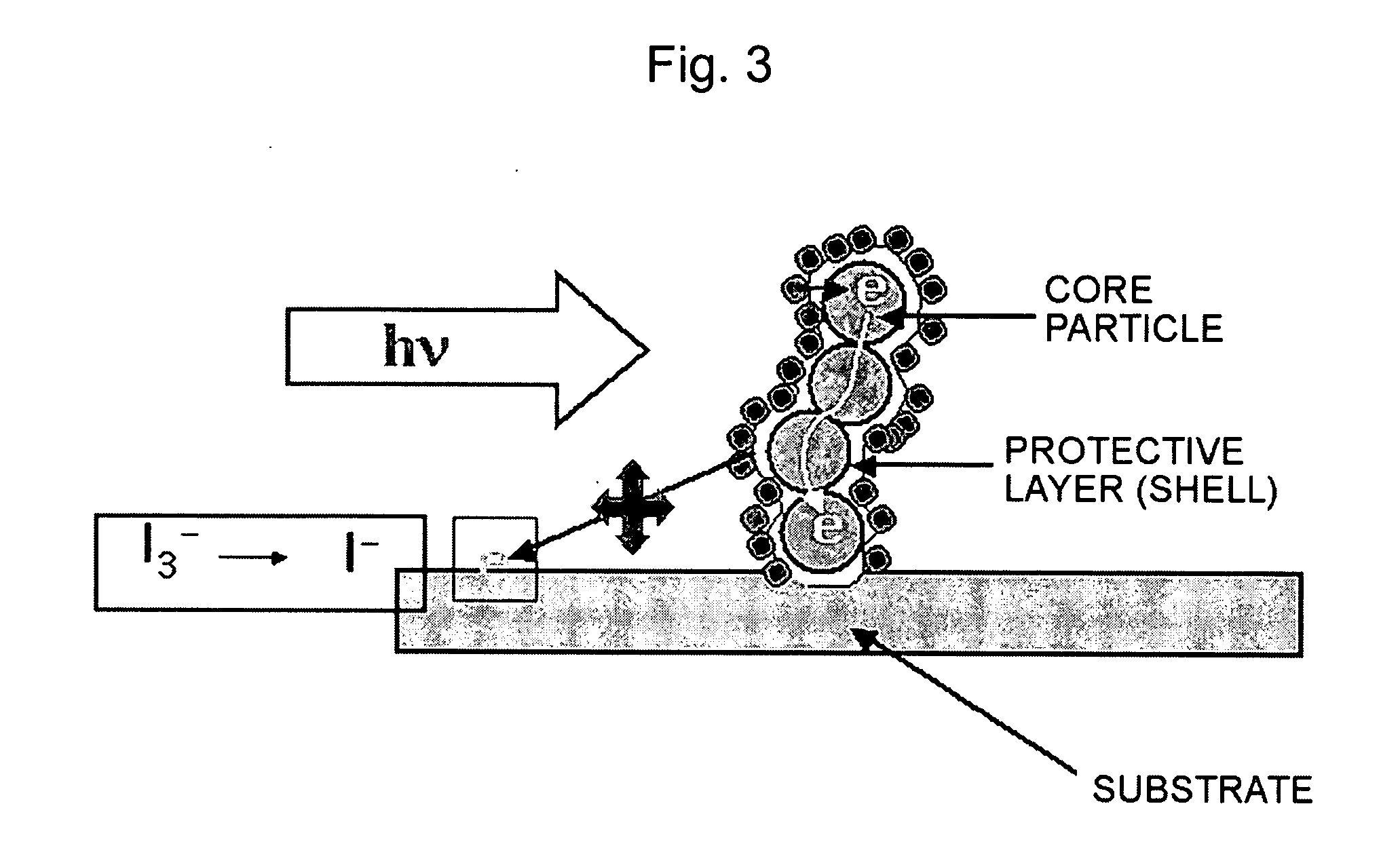Photoreceptive layer comprising metal oxide of core-shell structure and solar cell using the same
a solar cell and metal oxide technology, applied in the field of photoacceptive layer, can solve the problems of difficult electron migration to a central core through an outer shell, limited practical use and cell efficiency of solar cells, etc., and achieve the effect of preventing a recombination reaction and improving photoconversion efficiency
- Summary
- Abstract
- Description
- Claims
- Application Information
AI Technical Summary
Benefits of technology
Problems solved by technology
Method used
Image
Examples
example 1
[0046] A TiO2 paste (available from Solaronix, TI nanoxide, HTSP) was coated on a transparent conductive glass substrate coated with ITO and having a transmittance of 80% to a size of 1×1 cm2. The coated glass substrate was subjected to a thermal treatment process at 450° C. for 30 minutes. During this time, the thermal treatment conditions were a heating rate of 3° C. / min and a cooling rate of 5° C. / min.
[0047] 5 wt % Tyzor (available from Dupont) was used to form a shell structure on the thermally treated sample. The 5 wt % Tyzor was prepared by adding 47.5 g of butanol to 2.5 g of Tyzor.
[0048] To form the shell structure on the TiO2 layer of a core structure, the 5 wt % Tyzor solution was coated on the TiO2 layer by dipping, and was then subjected to a thermal treatment process in an oven at 100° C. for 20 minutes. The immersion time was 30 seconds.
[0049] The resultant photoelectrode was immersed in a dye (available from Solaronix, Ru 535) for 20 hours to allow the dye to be ad...
example 2
[0050] A dye-sensitized solar cell was manufactured in the same manner as in Example 1, except that a sample coated with TiO2 was immersed in the 5 wt % Tyzor solution for 60 seconds by dipping.
experimental example
[0052] Photocurrent voltages of the dye-sensitized solar cells manufactured in Examples 1 and 2 and Comparative Example 1 were measured using a photocurrent measurement system (e.g. Solar simulator available from Seric, I-V Curve Tracer available from Eko) to obtain a photocurrent voltage curve. A current density (Isc), a voltage(Voc), and a fill factor (FF) were calculated from the photocurrent voltage curve. Then, the photoconversion efficiency (ηe) was obtained from the calculated values and shown in Table 1. The photoconversion efficiency is calculated using the following equation:
ηe=(VocIscFF) / (Pinc)
[0053] where Pinc is 100 mw / cm2 (1 sun).
TABLE 1FF (%)Photoconversion efficiency (%)Example 157.54.170Example 256.73.982Comparative Example 154.83.964
[0054] As is apparent from Table 1, the dye-sensitized solar cells having the photoacceptive layer according to the present invention had improved FF, and thereby, an improved photoconversion efficiency compared to the dye-sensitize...
PUM
| Property | Measurement | Unit |
|---|---|---|
| thickness | aaaaa | aaaaa |
| thickness | aaaaa | aaaaa |
| thickness | aaaaa | aaaaa |
Abstract
Description
Claims
Application Information
 Login to View More
Login to View More - R&D
- Intellectual Property
- Life Sciences
- Materials
- Tech Scout
- Unparalleled Data Quality
- Higher Quality Content
- 60% Fewer Hallucinations
Browse by: Latest US Patents, China's latest patents, Technical Efficacy Thesaurus, Application Domain, Technology Topic, Popular Technical Reports.
© 2025 PatSnap. All rights reserved.Legal|Privacy policy|Modern Slavery Act Transparency Statement|Sitemap|About US| Contact US: help@patsnap.com



